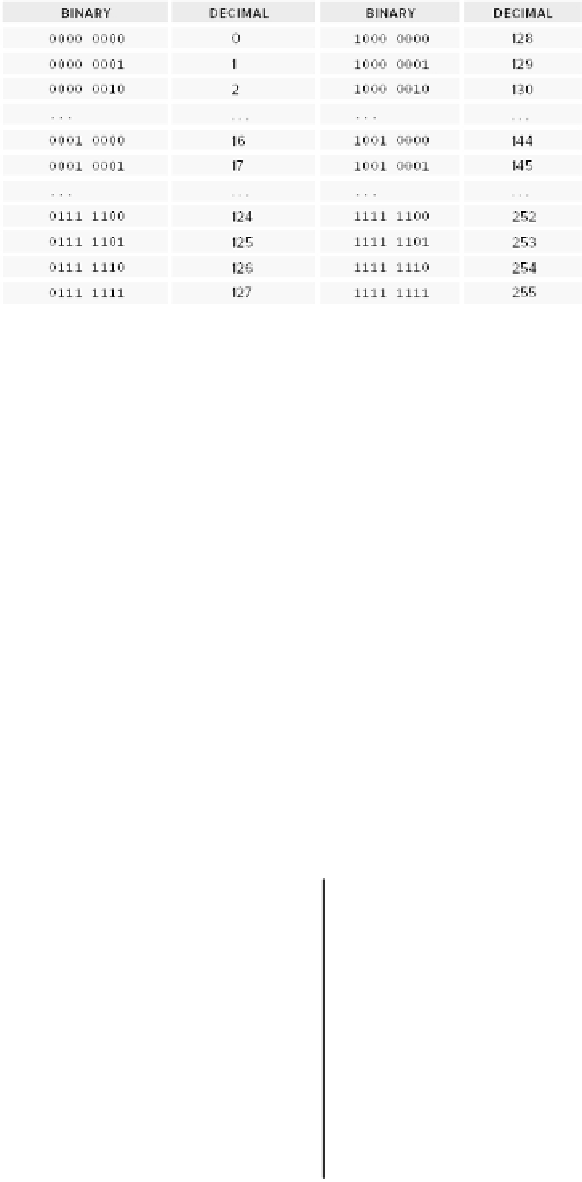Java Reference
In-Depth Information
Note that by using just 7 bits, you can represent all the decimal numbers from 0 to 127, which is a total
of 2
7
, or 128 numbers; and using all 8 bits you get 256, which corresponds to 2
8
numbers. In general, if you
have
n
bits available, you can represent 2
n
positive integers with values from 0 to 2
n
−
1
. Of course, I am only
talking in the context positive numbers so far. If you also need the same number of negative numbers, you
need more bits. I get to negative numbers in a moment.
Hexadecimal Numbers
When you get to work with larger binary numbers — for example, numbers with 24 bits:
1111 0101 1011 1001 1110 0001
the notation starts to be a little cumbersome, particularly when you consider that if you apply the method you
saw in the previous section to work out what this is in decimal notation, it's only 16,103,905, a miserable 8
decimal digits. You can sit more angels on a pinhead than that. Well, as it happens, you have an excellent
alternative.
Arithmetic to base 16 is a very convenient option. Numbers to base 16 are
hexadecimal
numbers. Each
digit can have values from 0 to 15 (the digits from 10 to 15 being represented by the letters
A
to
F
as shown
in
Table B-2
,
or by
a
to
f
if you're averse to capitalization) and values from 0 to 15 correspond quite nicely
with the range of values that four binary digits can represent.
0
0000
1
1
0001
2
2
0010
3
4
0011
4
4
0100
5
5
0101
6
6
0110
7
7
0111
8
8
1000
9
9
1001
A
10
1010







